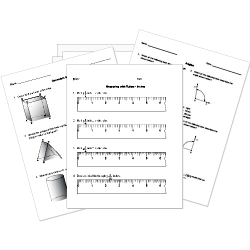Factors Affecting the Rate of Reaction
Factors Affecting the Rate of Reaction
This lesson aligns with NGSS PS1.B
Introduction
The rate of reaction is a fundamental concept, representing the speed at which reactants transform into products. It is defined as the change in concentration of either reactants consumed or products formed per unit of time. This dynamic parameter provides crucial insights into the molecular processes, revealing the impact of various factors such as concentration, temperature, and catalysts. The study of reaction rates not only explains the kinetics of chemical reactions but also holds practical significance in diverse fields, including industrial processes, environmental remediation, and understanding biological systems. In this article, we will delve into the factors that influence the rate of reaction.
Factors Affecting the Rate of Reaction
Modifying any of the listed parameters can influence the rate of reaction.
I. Concentration of Reactants
A. Collision Theory:
According to the collision theory, the interaction of reactant molecules is at the heart of forming products. Increasing the concentration of reactants amplifies the number of colliding particles, consequently increasing the reaction rate.
II. Nature of the Reactants:
A. Reactivity of Substances:
The reaction rate is tied to the specific substances involved. Acid/base reactions, salt formation, and ion exchange processes typically exhibit swift reactions. Conversely, the formation of covalent bonds leading to larger molecules often results in slower reactions. The nature and strength of bonds within reactant molecules play a substantial role in dictating the rate of their transformation into products.
III. Physical State of Reactants:
The physical state of reactants, whether solid, liquid, or gas, introduces an additional layer of complexity to reaction kinetics. If reactants share the same phase, such as in an aqueous solution, thermal motion facilitates their coming together. Conversely, when reactants exist in different phases, the reaction is confined to the interface between them. This interplay is particularly evident in the interaction between liquids and gases, where the reaction primarily occurs at the liquid's surface.
IV. Surface Area of Reactants:
In the case of two solids, the participation of particles in the reaction primarily occurs at the surface. Additionally, when a solid is crushed into smaller particles, the increased surface area results in a higher particle count at the surface. This phenomenon implies an enhanced frequency of collisions between these particles and reactant particles, leading to a more rapid occurrence of the reaction.
Moreover, when two or more reactants share the same fluid phase, their particles exhibit a higher collision frequency compared to situations where either or both are in the solid phase or within a heterogeneous mixture. In a heterogeneous medium, particle collisions transpire at the interface between phases. This dynamic results in a notable reduction in the number of collisions between reactants per unit time compared to the homogeneous case, consequently decreasing the reaction rate.
V. Temperature:
A. Impact on Collision Frequency:
Temperature plays a pivotal role in determining reaction rates by influencing the collision frequency between reactant molecules. Increasing the temperatures lead to a greater number of collisions per second, thereby increasing the overall reaction rate. However, the effect of temperature varies for endothermic and exothermic reactions, influencing either the forward or backward reaction rates, respectively.
B. Temperature-Dependent Reactions:
In systems where multiple reactions are possible, alterations in temperature conditions can result in the production of different products from the same set of reactants. For instance, under varying temperature conditions in the presence of dilute sulfuric acid, ethanol can yield diethyl ether at 100 °C and ethylene at 180 °C.

VI. Effect of Solvent:
The nature of the solvent introduces an additional layer of complexity to understanding reaction rates. Solvents impact the interactions between solute particles, as exemplified in reactions between sodium acetate and methyl iodide.
The rate of this reaction is faster in organic solvents like dimethylformamide (DMF) than in methanol due to the differing ability to form hydrogen bonds with the reactants.
VII. Catalysts:
Catalysts, as reaction facilitators, significantly influence reaction rates by altering the reaction mechanism. Categorized as promoters and poisons, these catalysts respectively increase or decrease reaction rates.
Summary
- Rate of reaction is defined as the change in concentration of either reactants consumed or products formed per unit of time.
- Increasing the concentration of reactants amplifies the number of colliding particles, consequently increasing the reaction rate.
- Increasing the temperatures lead to a greater number of collisions per second, thereby increasing the overall reaction rate.
- The rate of certain reactions is faster in organic solvents like dimethylformamide (DMF) than in methanol due to the differing ability to form hydrogen bonds with the reactants.
Related Worksheets:













